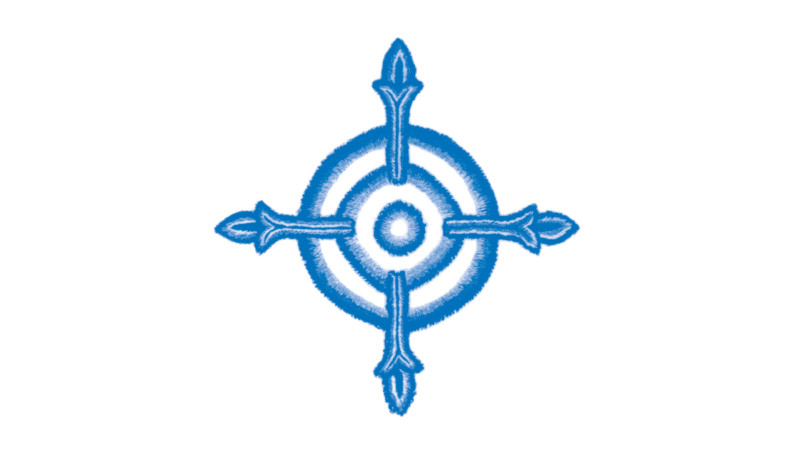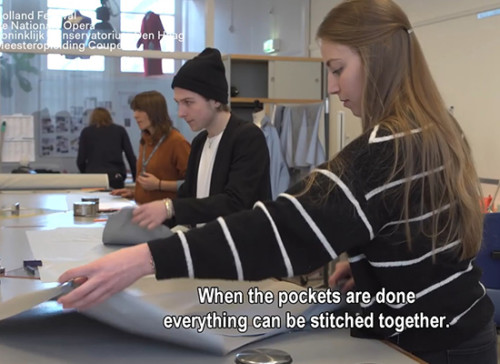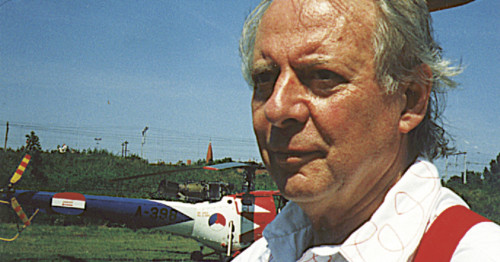On part 1- Michael
Cristiano Melli, Assistant Dramaturgist in aus LICHT, tells about the three parts of the opera cycle. This article is about part 1 - MICHAEL. The other two articles will be published in the coming months.

“Every direction towards the impossible is my destination”.
- Karlheinz Stockhausen, October 1992
The son of a troubled family; the mother is euthanized (or better said, murdered); a younger brother dies in childhood, and the alcoholic father disappears in World War II. The boy shows exceptional music talents, is accepted in a conservatoire, and during his time on Earth travels the world experiencing the joys and sorrows of life through his music, until reunited with the beyond on Light. This fantastic trajectory fits both Stockhausen and Michael, one of the characters of his gargantuan opera cycle LICHT – Die Sieben Tage der Woche. Born in Mödrath, Germany, in August 22nd 1928, Karlheinz Stockhausen’s career is undoubtedly one of the most fascinating ever. His creative power and strong intuition opened uncountable paths, ultimately shaping what music is in our time in any genre. The summit of his output is present in LICHT, a musical drama (as the composer called it) comprising one opera for each day of the week, lasting for twenty-nine hours and in which he relentlessly worked from 1977 until 2004.
Endless spiral
LICHT’s mystical and universal aspirations are clear from the very characters depicted. In it, we have Michael the archangel, fused with Christ, God made man; Eve the feminine, the human, lover and mother; and Lucifer the fallen angel, the necessary divine antagonist. Gathering from many spiritual traditions and his personal believes, Stockhausen places the archetypical protagonists in an endless spiral of birth, love, temptation, death and further rebirth. Depicted on stage as either instrumentalists or singers (tenor and trumpet for Michael; soprano and basset-horn for Eve; and menacing bass and trombone as Lucifer), each character also has a distinctive melody that, unlike leitmotives, are their aural personifications (instead of representations), subject to transformations and interactions. These melodies, called “formulas” by Stockhausen, show both the spiral and the fractal musical construction in LICHT, since they are present throughout the whole cycle either in its initial form or stretched, compressed, ornamented, striped down to its core essence (the nuclear formula), defining durations of sections or even full scenes, always guided by his unmatchable creative fantasy.
Archangel Michael
DONNERSTAG aus LICHT (Michael’s opera) is the basis for Part 1 of aus LICHT. Under the visionary direction of Pierre Audi, the audience will feel the almost completely autobiographical MICHAELs JUGEND, in which the archangel comes to earth to learn and experience human life. The tragedy of Michael’s (and Stockhausen’s) childhood is intertwined with his discovery of love through Moon-Eve, followed by his entrance exam into a conservatorium in which the Angel amazes the jury as a tenor, a trumpeter and a dancer recounting his early years. In the next scene, MICHAELs REISE UM DIE ERDE, the young God-son travels through the world as a trumpeter, rediscovers Eve, is mocked and crucified, and together with her ascends to heaven, in a musical journey bound to impress through its delicate and yet powerful sound alchemy. This core is surrounded by MICHAELs GRÜSS and MICHAELs ABSCHIED, and as an extra, the UNSICHTBÄRE CHÖRE envisioned by Stockhausen will give their out-worldly divine voices. The directions toward the impossible were Stockhausen’s destinations. As the great pioneer that he was, the paths are open and we can rejoice in his vision experiencing this historical production which will have an ever-lasting impact. A truly unique opportunity. An impossible finally made possible. A journey to live through: our destination from LIGHT.
Cristiano Melli – composer, teacher in the Master aus LICHT at the Koninklijk Conservatorium Den Haag and Assistant Dramaturgist in aus LICHT


